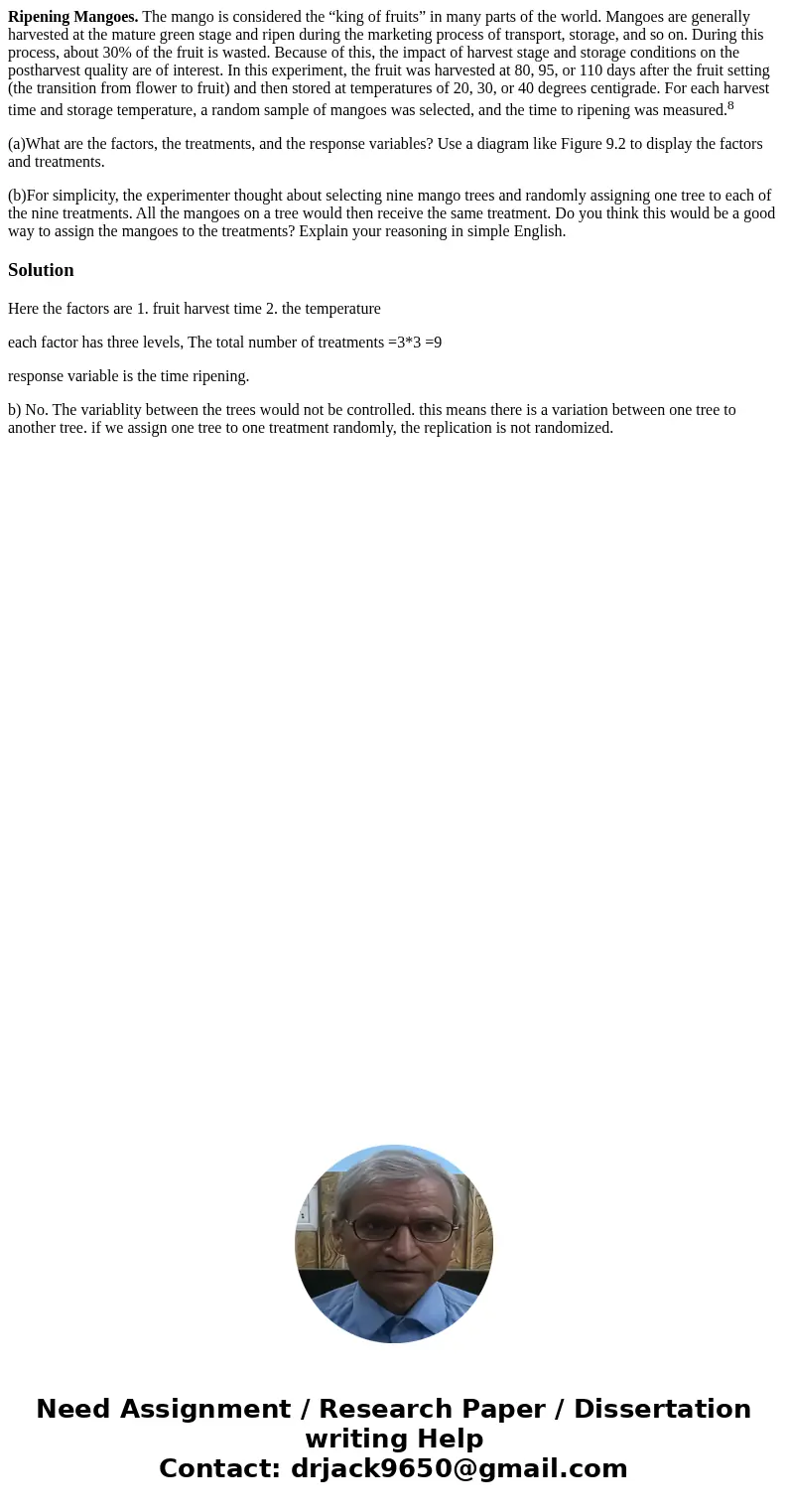Ripening Mangoes The mango is considered the king of fruits
Ripening Mangoes. The mango is considered the “king of fruits” in many parts of the world. Mangoes are generally harvested at the mature green stage and ripen during the marketing process of transport, storage, and so on. During this process, about 30% of the fruit is wasted. Because of this, the impact of harvest stage and storage conditions on the postharvest quality are of interest. In this experiment, the fruit was harvested at 80, 95, or 110 days after the fruit setting (the transition from flower to fruit) and then stored at temperatures of 20, 30, or 40 degrees centigrade. For each harvest time and storage temperature, a random sample of mangoes was selected, and the time to ripening was measured.8
(a)What are the factors, the treatments, and the response variables? Use a diagram like Figure 9.2 to display the factors and treatments.
(b)For simplicity, the experimenter thought about selecting nine mango trees and randomly assigning one tree to each of the nine treatments. All the mangoes on a tree would then receive the same treatment. Do you think this would be a good way to assign the mangoes to the treatments? Explain your reasoning in simple English.
Solution
Here the factors are 1. fruit harvest time 2. the temperature
each factor has three levels, The total number of treatments =3*3 =9
response variable is the time ripening.
b) No. The variablity between the trees would not be controlled. this means there is a variation between one tree to another tree. if we assign one tree to one treatment randomly, the replication is not randomized.

 Homework Sourse
Homework Sourse